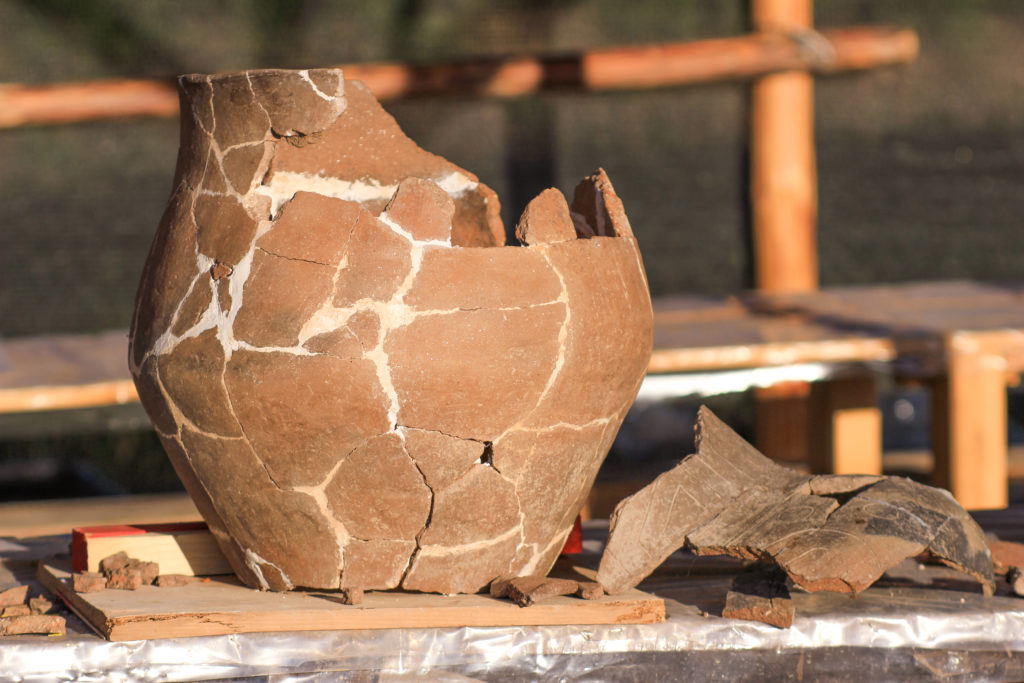
Throughout the month of August, we’re taking a close look at 23 verses of the New Testament. They comprise Ephesians chapter one, which paints one of the Bible’s most comprehensive pictures of what it means for ordinary people to be “in Christ.”
A quarter century ago Tom Smith, a pastor in South Africa, was on the fast track.
Using his entrepreneurial spirit and ministry leadership gifts, he soon found himself presiding over a megachurch. But the cost was high. Smith gradually succumbed to exhaustion and burnout. The work of God through him was destroying the work of God in him – an old story which all too many church leaders know by heart.
Tom and his wife decided to step away from ministry. They wrestled with a hard question: Did they have any vision or energy left to serve a local congregation?
In the end, they chose to begin again. They met with a small group in 2003, searching for a picture or metaphor that might describe the kind of church they hoped to become. They settled on Paul’s statement in 2 Corinthians 4:7: “But we have this treasure in jars of clay to show that this all-surpassing power is from God and not from us.”
The named themselves the Claypot Church.
After discovering that earthenware vessels on the retail market are surprisingly expensive, they located a discarded clay pot at a local business. It was filled with mud and chipped here and there. In other words, it was exactly what they were looking for.
Smith recalls, “At the conclusion of one of our services we placed the pot in a big bag and broke it on the concrete floor. It symbolized our brokenness; everyone in the community took a broken piece home. All of us wrote a prayer on our shards and we came together to reassemble the pot. Although the pot is glued together, it still isn’t a picture of perfection. Yet when we put a candle in it, it radiated a glorious light.”
The Claypot Church in Johannesburg is not a big church. But it’s a humble church – launched on the premise that the strength and integrity of every congregation comes from Christ and not from us.
That’s fully in line with what Paul writes in the last two verses of the first chapter of Ephesians: “And God placed all things under his feet and appointed him to be head over everything for the church, which is his body, the fullness of him who fills everything in every way” (vs. 22-23).
The Greek word translated “fullness” is pleroma. In the first century that had become a key term in philosophical conversation. The good life was defined as being “filled-full.” Spiritual seekers yearned to be filled to the brim with the presence and power of divinity.
Paul is saying, “The fullness of God – everything you’ve ever been looking for – is available right now in Jesus.”
And notice where this fullness is “located.” Paul declares that God’s pleroma is encountered in “the church, which is his body…”
This is unsettling news for the myriad self-described American Christians who consider churches something akin to kryptonite. Instead of joining what will surely turn out to be a dysfunctional spiritual family, why not pursue instead a pathway of do-it-yourself discipleship?
Paul’s answer is that sharing life with other Christ-followers is not an elective in the Christian curriculum, nor a side dish we can pass up at God’s buffet table. Paul uses the metaphor of “Christ’s Body” more than 30 times in his letters. The church is an organization only secondarily. Primarily the Body is an organism – a living association of women and men who are becoming more and more like Jesus, with Christ himself as the head. We are his arms, legs, hands, feet, sinews, and muscles.
If Jesus is going to accomplish anything in this world, it appears he’s going to do it through his church. Therefore we walk, serve, and love together. A disembodied limb or organ may be a great prop for a horror movie, but it’s certainly not going to achieve very much on its own.
But what about the fact that every church, if you look long enough and hard enough, is seriously messed up?
One of the miracles of the gospel is that Jesus is able and willing to work through congregations with major flaws – in other words, with your congregation. And we must be willing to do the same.
In the end, we’re all members of the Claypot Church.
Which is a pretty wonderful thing.
After all, the cracks are what allows the Light to shine through.
